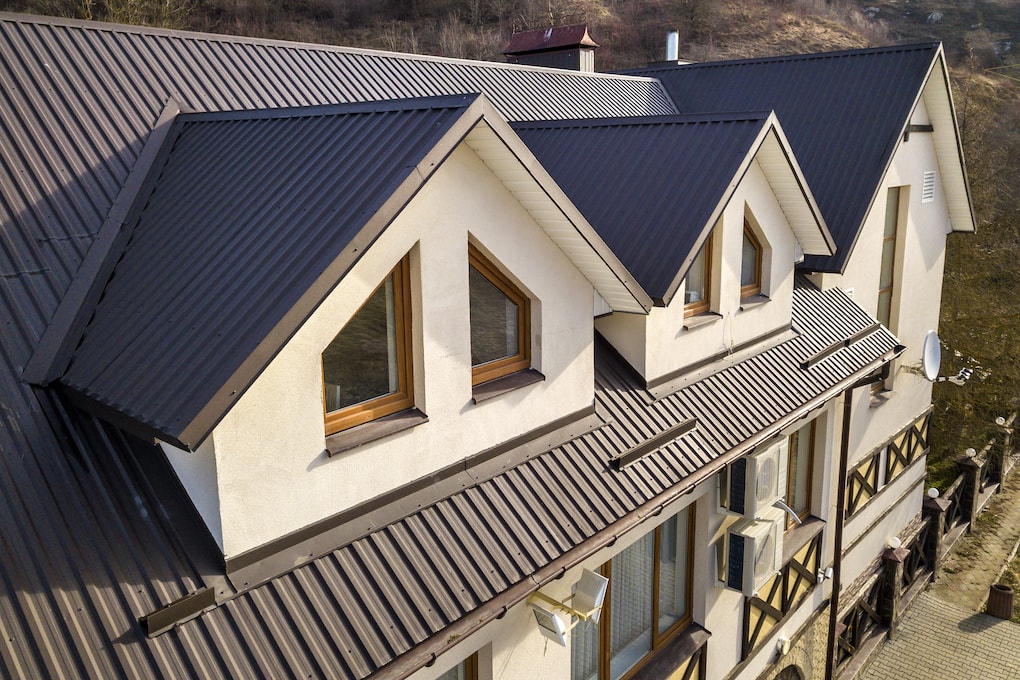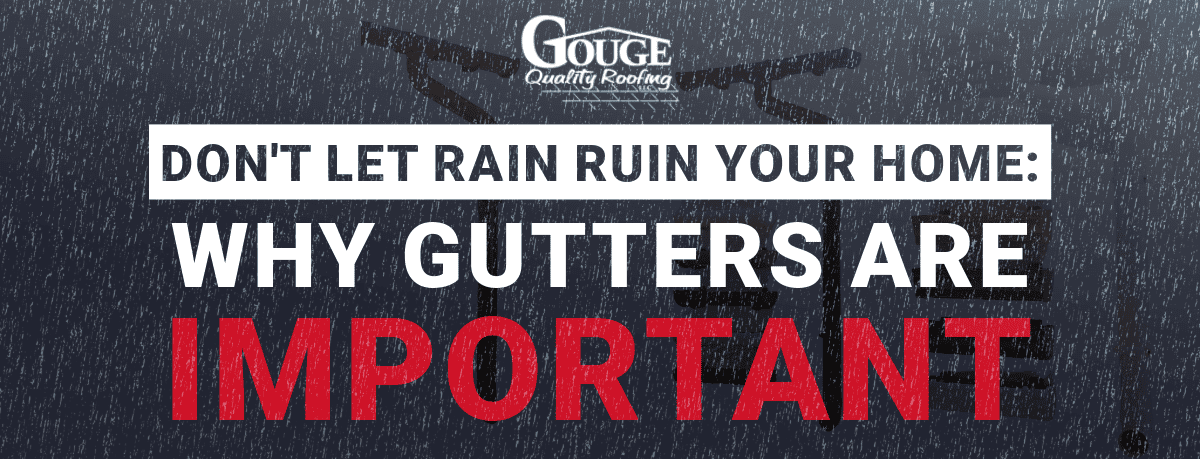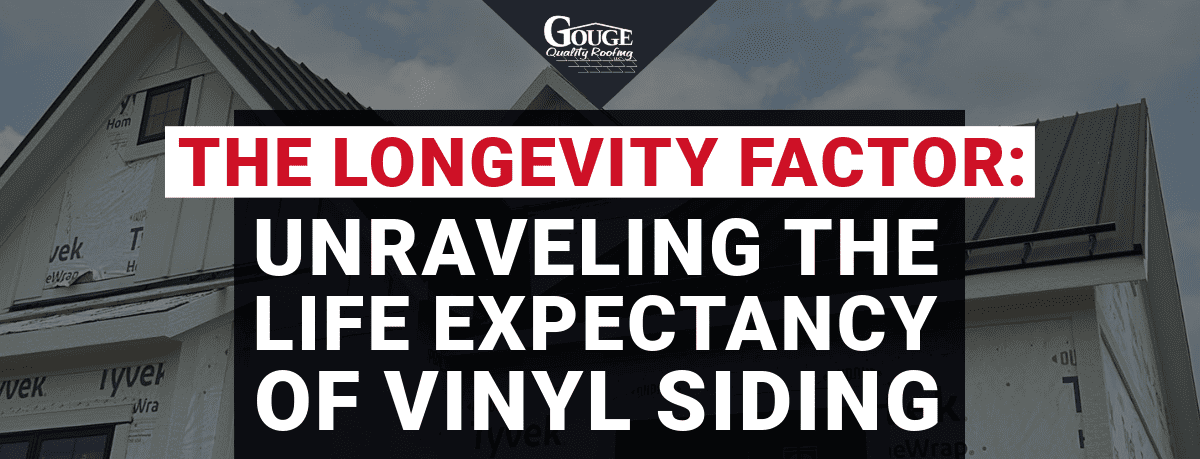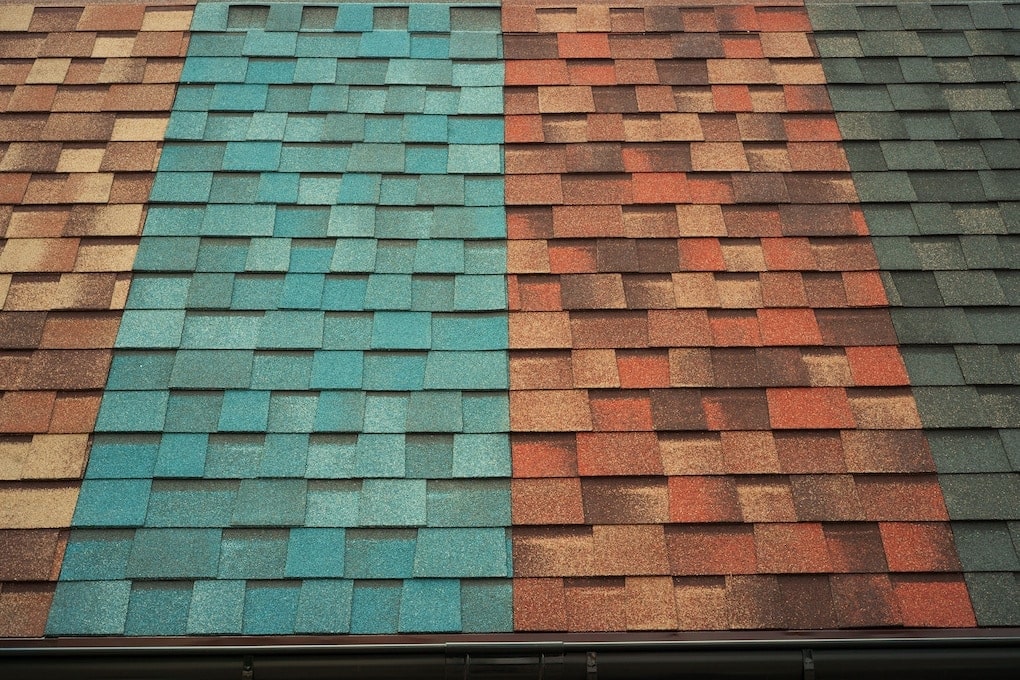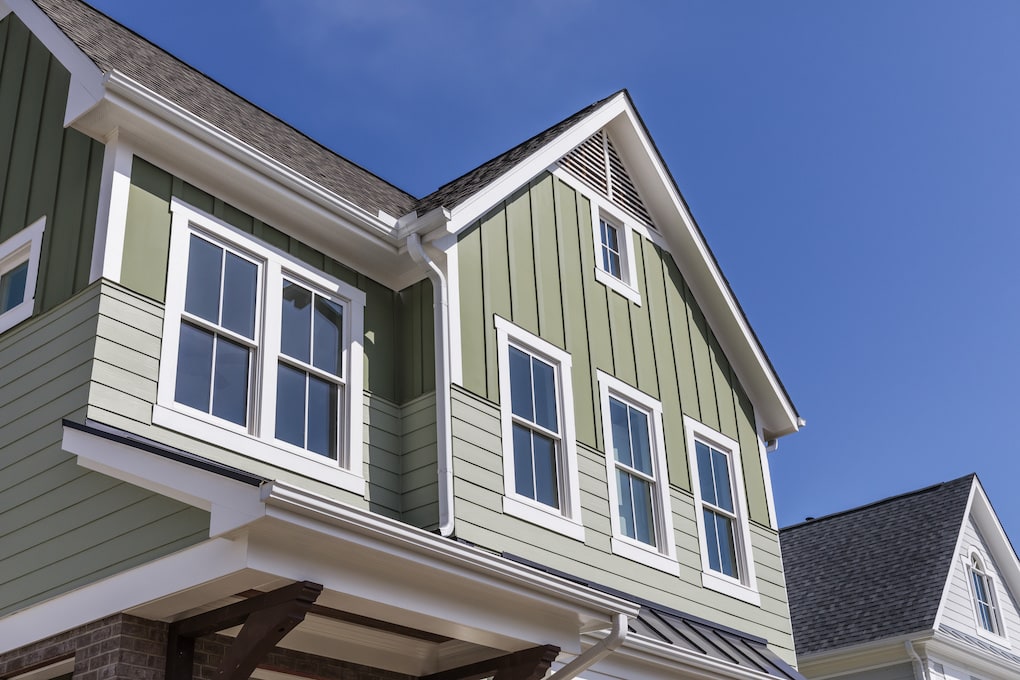Perhaps you’ve lived in your home for many years, or you’re a new homeowner looking for upgrades, and it’s time for a roof replacement. When you make such a significant investment, you want to ensure that the materials you choose are the best fit for you.
Asphalt shingles are traditionally the most common residential roofing material, but metal roofing has also gained popularity in the past decades. So which material is right for you?
Let’s unpack the pros and cons of a metal roofs vs. shingles. But first, here are the top things you should consider when choosing your roofing material.
Durability & Longevity
Most homeowners consider the longevity of roofing materials to be a top consideration when it’s time for a roof replacement. When making such a significant investment in your home, you want your roof to last as long as possible.
The more durable your roof is, the better chances you have of saving money on future repairs. Homes in areas with extreme inclement weather also benefit greatly from a durable roof.
Shingles and metal roofing are both durable options that many roofers are glad to recommend; however, you will likely get longer wear out of a metal roof. This longevity of metal roofs is thanks to their non-absorptive nature. Asphalt shingles will absorb water and freeze in cold temperatures, but metal roofs do not absorb water from precipitation.
- Overall, you can expect new asphalt shingles to last roughly 20 to 25 years, and metal roofs have an average lifespan of 50 to 70 years.
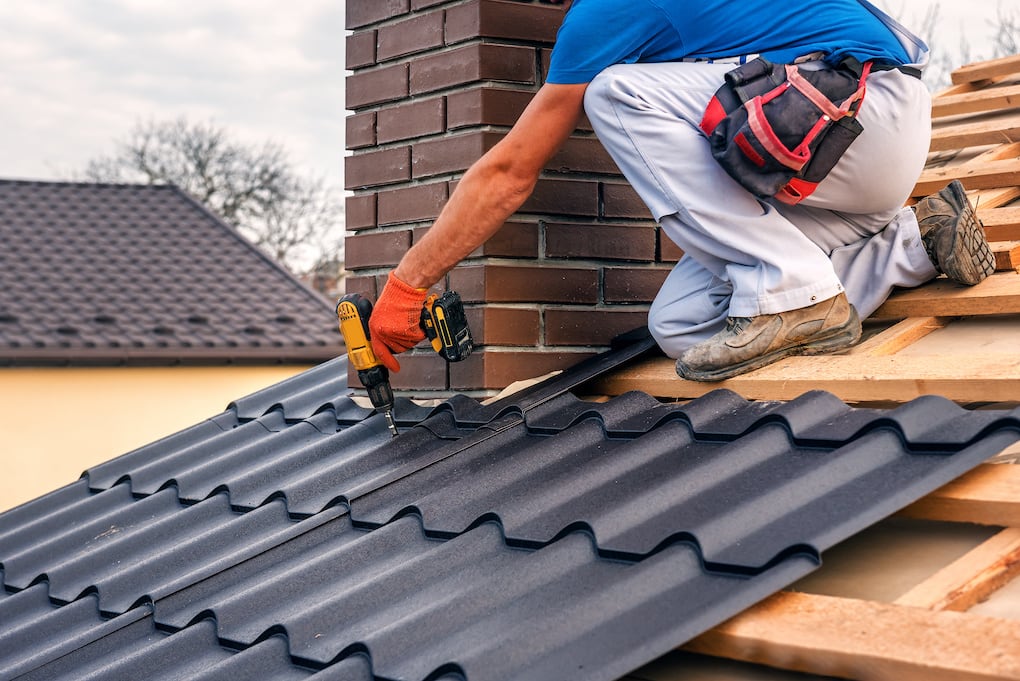
Cost
Asphalt shingles have been popular with the majority of homeowners for many years, thanks to their excellent performance for a great price. Shingles typically have a lower price because they are easier to install.
Metal roofs, on the other hand, take more specialized knowledge to install, and the material itself is more expensive.
- Final prices vary based on brand and location, but the average cost of an asphalt shingle roof is $7,000 to $10,000, while metal roofs typically cost between $12,000 and $20,000.
Eco-Consciousness
As more and more homeowners actively try to lower their carbon footprint, people want to know what the environmental considerations are for products they consume, including roofing materials.
Asphalt shingle roofs are not traditionally very eco-friendly. Technically, both materials can be recycled, but the process of separating and recycling shingles is fairly expensive and has yet to become common practice.
About 12 million tons of asphalt materials get dropped in landfills each year, which is definitely a sad consideration for the environment. However, more efforts are being made to improve recycling efforts for asphalt shingles and other asphalt materials.
Metal roofs are much more easily recyclable than shingles. Since the material lasts for decades, landfills are not filling up as quickly. Additionally, old metal is easily recycled into new products.
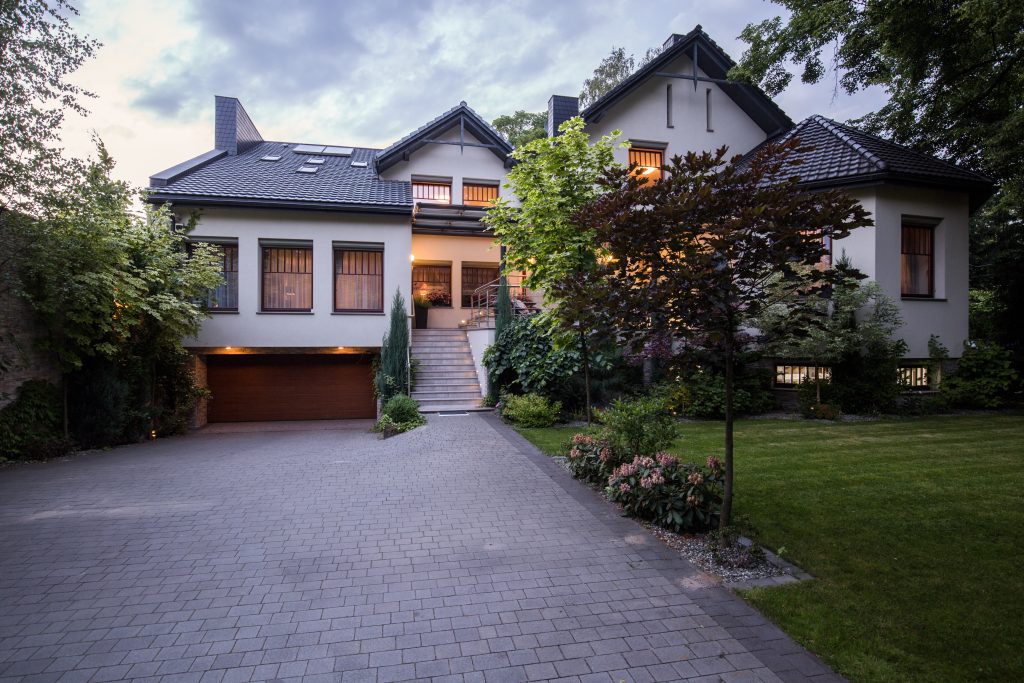
Installation Time
While the amount of time it takes to replace a roof depends on various factors, you can almost always anticipate that asphalt shingles will have a quicker installation time than metal roofing.
Asphalt shingle roofs don’t require as much specialized knowledge from roofing professionals. Since shingles are so common, every roofer knows the ins and outs of how to install them. Typically, a full asphalt roof can be replaced in 1 to 3 days.
Metal roofs require more skill and specialized knowledge to install. The installation has very little room for error, so contractors must be very precise. Because of this, metal roofs take a bit longer to install— typically 2 to 4 days or up to a week, depending on the weather and roof size.
Aesthetics
Roofing material and color play a huge part in the overall appearance of your home. Most homeowners consider resale value when they make changes to their house, as no one wants to make an alteration that negatively impacts their home’s curb appeal.
Metal roofs were traditionally never thought of as particularly attractive. Many people may have an image of a flat, tin metal roof that makes loud sounds when it rains. But modern metal roofing has come a long way in terms of appearance.
Metal roofing is a very sleek and sophisticated roofing option, and it can be laid in various ways to resemble other roofing materials— including asphalt shingles. It also comes in a wide variety of colors.
Asphalt shingles have also come a long way in aesthetic considerations. Singles add a lot of depth and dimension to a roof, and you can even opt for a multicolored look.
Overall, aesthetics and design choices are up to the individual homeowner, so both materials offer great options for your home’s appearance.
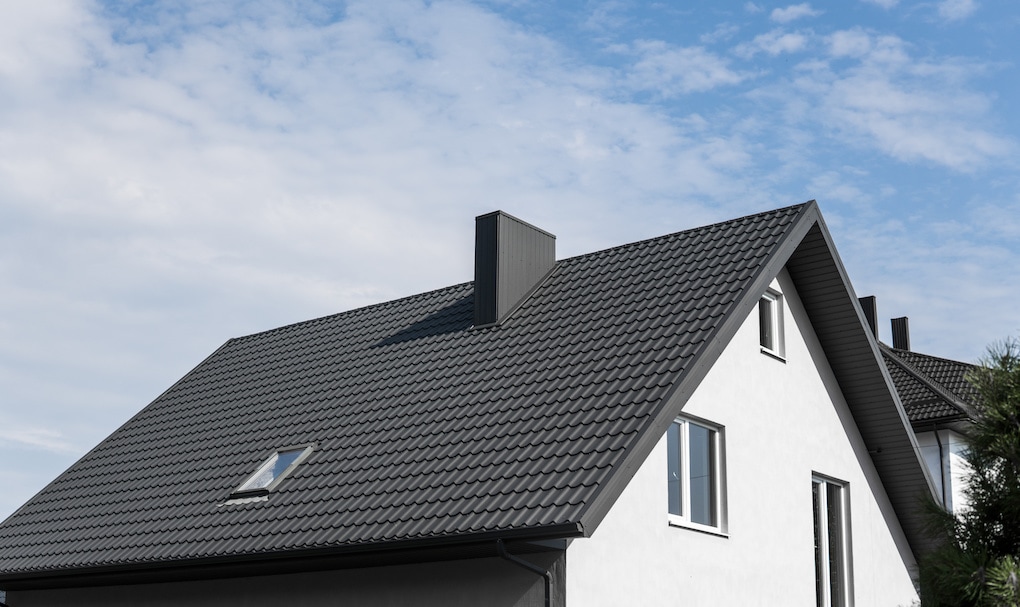
Maintenance
We know that performing roof maintenance likely isn’t your favorite pastime, but regular maintenance is required to make sure your roof reaches its full potential of longevity.
Maintenance for asphalt shingles mostly involves the layer underneath. The following materials can deteriorate over time and need repair or replacement:
- Metal flashing
- Adhesives
- Sealants
- Rubber pipe boots (Flashing for plumbing pipes that come through the roof)
The design of a metal roof lessens the considerations for flashing and rubber pipe boots. Since metal is more resistant to wear, they require less regular maintenance than shingle roofs. Even still, the maintenance responsibilities for shingles are incredibly reasonable.
Fire & Storm Resistance
Both roofing materials stand up against fire, but metal roofing offers the best fire resistance. Additionally, inclement weather more easily damages asphalt shingles than metal.
Heavy rain, snow, and wind can cause shingles to experience granule loss. So, overall, metal roofs resist fires and storm damage more than shingle roofs.
- True or False— Hail dents metal roofs? False! It is commonly believed that hail causes dents in metal roofs, but metal roofs are very efficient at handling hail impact with little to no damage.
Summary of Metal Roof vs. Shingles Pros and Cons
Overall, metal roofs and asphalt shingle roofs offer different advantages for different homeowners. While metal roofs offer the best overall performance of the two, asphalt shingles stand out in a few categories.
🟢 Asphalt Shingles Pros:
- Very affordable
- Aesthetically-pleasing
- Stands up to fire and storms
- Minimal maintenance
- Repairs and installations are fast and easy
- Standard and frequently installed among contractors
❌ Asphalt Shingles Cons:
- Don’t last as long as other materials
- Not very environmentally-friendly
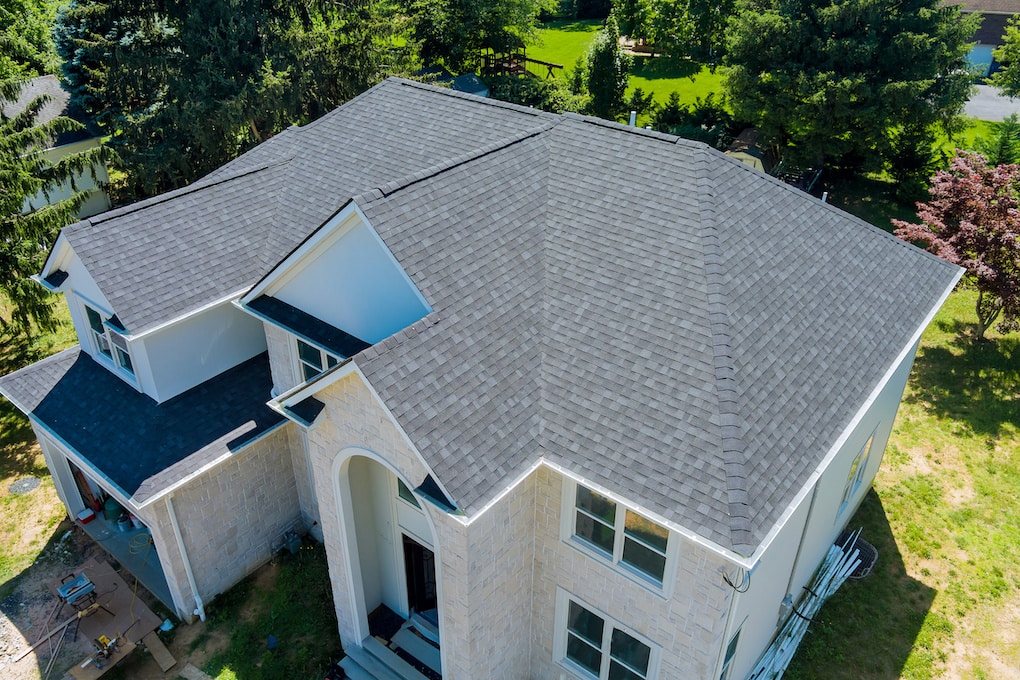
🟢 Metal Roofing Pros:
- Incredibly durable and long-lasting
- Sleek appearance
- Fire resistant
- Eco-friendly
- Little-to-no maintenance
❌ Metal Roofing Cons:
- Longer installation time
- More expensive
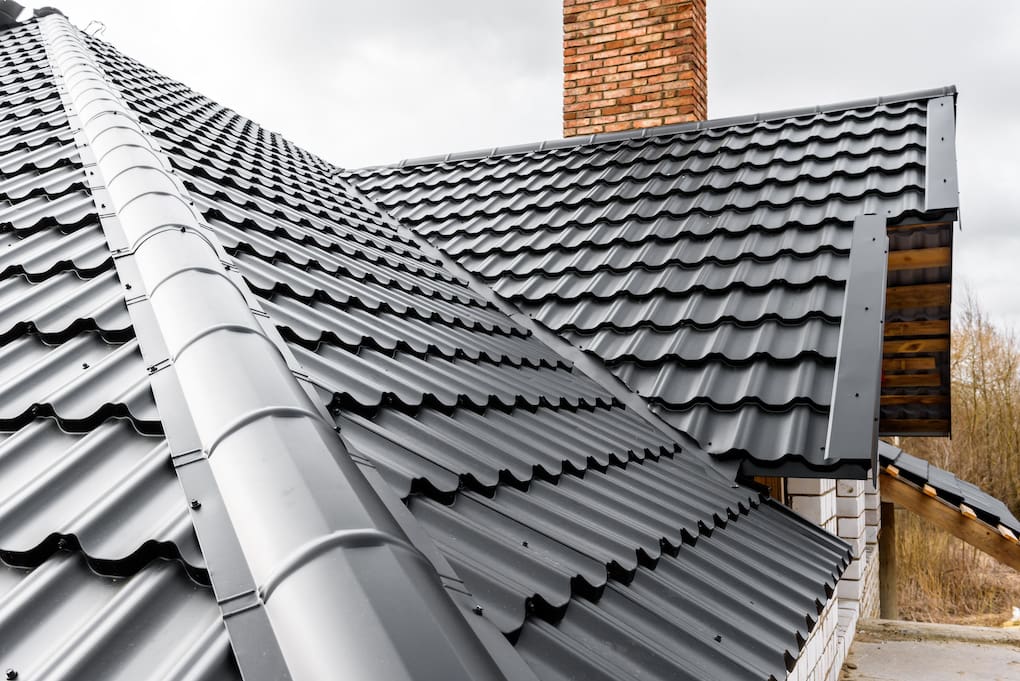
What Other Roofing Materials Are Available?
Asphalt shingles and metal roofing are not the only options for residential roofs. There are many selections available for roofing, some more popular than others. Check out the list below to see if any appeal to you.
Solar Tiles
You’ve heard of solar panels, but have you heard of solar tiles? Solar tiles, or solar shingles, combine seamlessly with existing shingles. As more and more homeowners consider the environment with their stylistic choices, solar tiles are becoming increasingly more popular. If solar panels are not allowed in certain homeowners’ associations, solar tiles are a fantastic substitute.
- 🟢 Pros:
- Energy-efficient
- Aesthetically pleasing
- ❌ Cons:
- One of the more expensive solar options
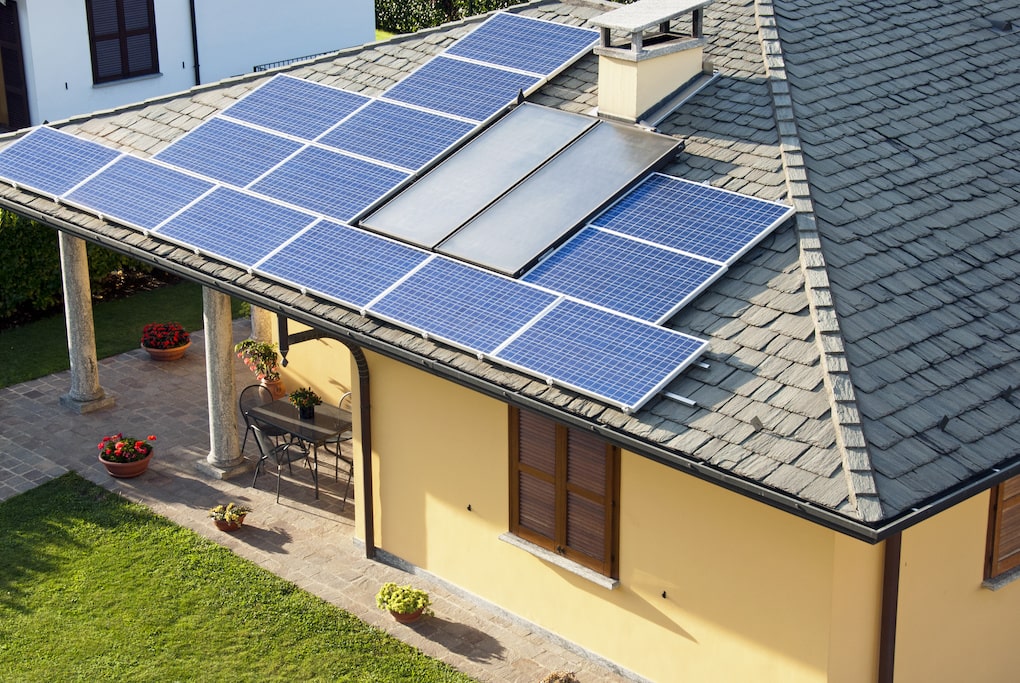
Slate
Slate: the forever roof! Slate is a popular choice for homeowners who value longevity above all else because slate roofs last more than 100 years. It is resistant to most undesirable pests and weather, but hail can be an issue because slate can break with heavy impact.
- 🟢 Pros:
- Longevity— over 100 years
- Waterproof
- Resistant to mold and fungus
- ❌ Cons:
- Expensive
- Can break when stepped on or in heavy hail storms
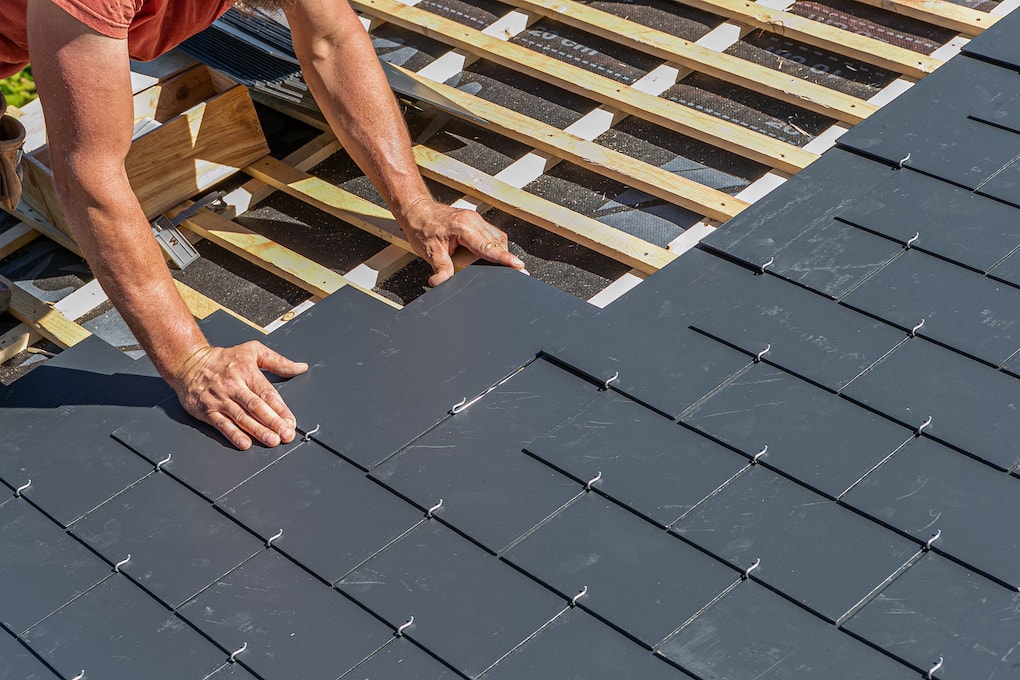
Clay Tiles
Clay tiles are often seen on homes in the western or southern United States in desert-like areas. This is because clay tiles perform best in dry, warm climates. They also stand up to seismic risk (risk of earthquakes) that are more likely to happen on the West Coast. This attractive option lasts 50 to 100 years, and their price tag reflects that.
- 🟢 Pros:
- Withstand impact from tornadoes, hurricanes, earthquakes, and strong winds
- Attractive appearance
- Long-lasting
- ❌ Cons:
- Can break when walked on
- Requires attentive maintenance
- More expensive option
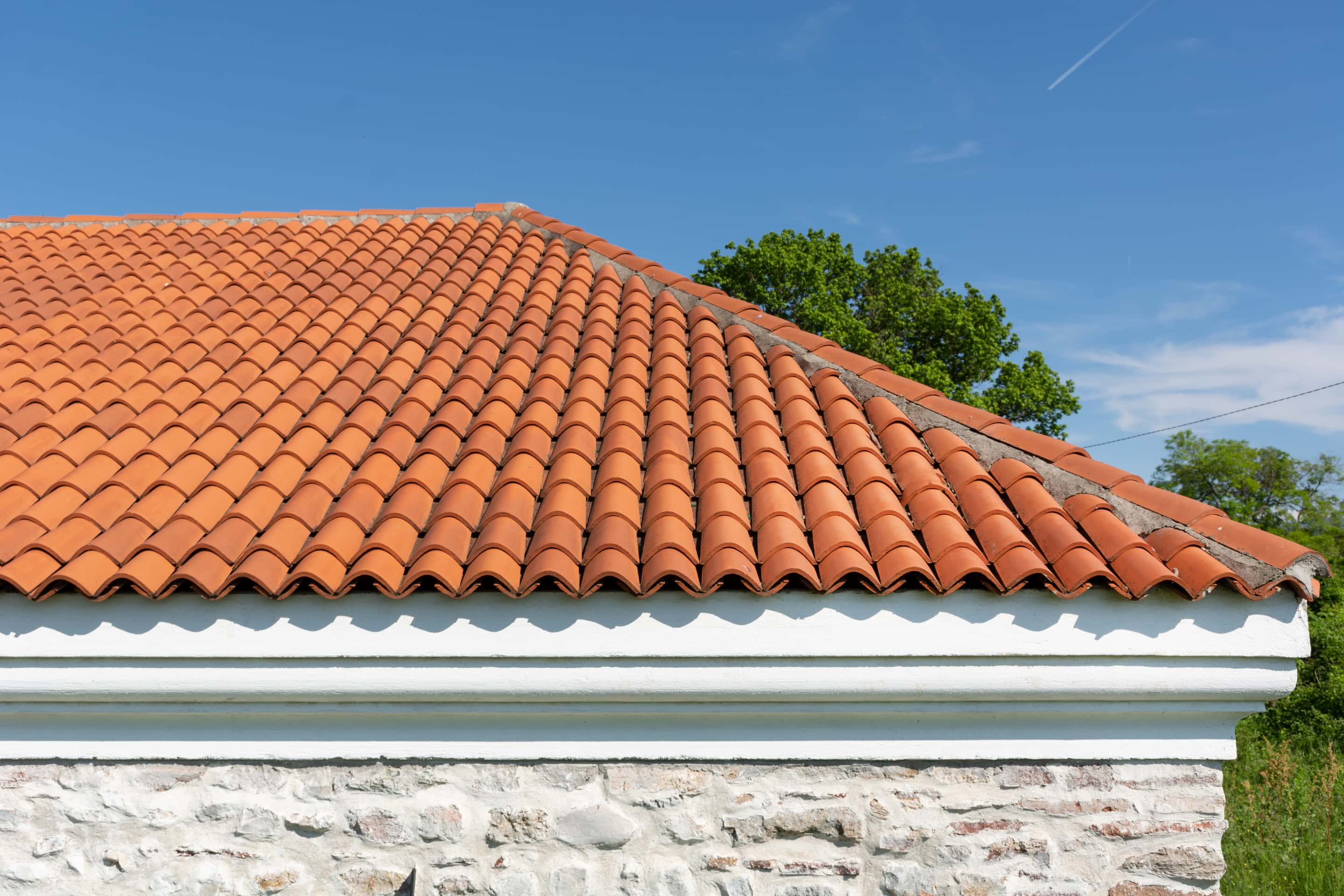
Green Roofs
There’s a (moderately) famous restaurant called Al Johnson’s Swedish Restaurant in the quaint tourist destination of Door County, Wisconsin. This restaurant is so unique because there are goats on the roof! That’s right; Al Johnson’s Swedish Restaurant features a green roof.
Green roofs are covered with grass and plants. They improve air quality, insulate homes, and reduce water runoff. Plus, they’re fantastic for the environment! Green roofs aren’t the most common roofing materials, but they sure make houses unique and special.
🟢 Pros:
- Environmentally-friendly
- Lifespan of around 40 years
- Reduced pollution
- Optional goats 🐐
❌ Cons:
- Require frequent structural support (waterproofing, drainage, filtration, soil, compost, etc.)
- Adds a weight load to your house
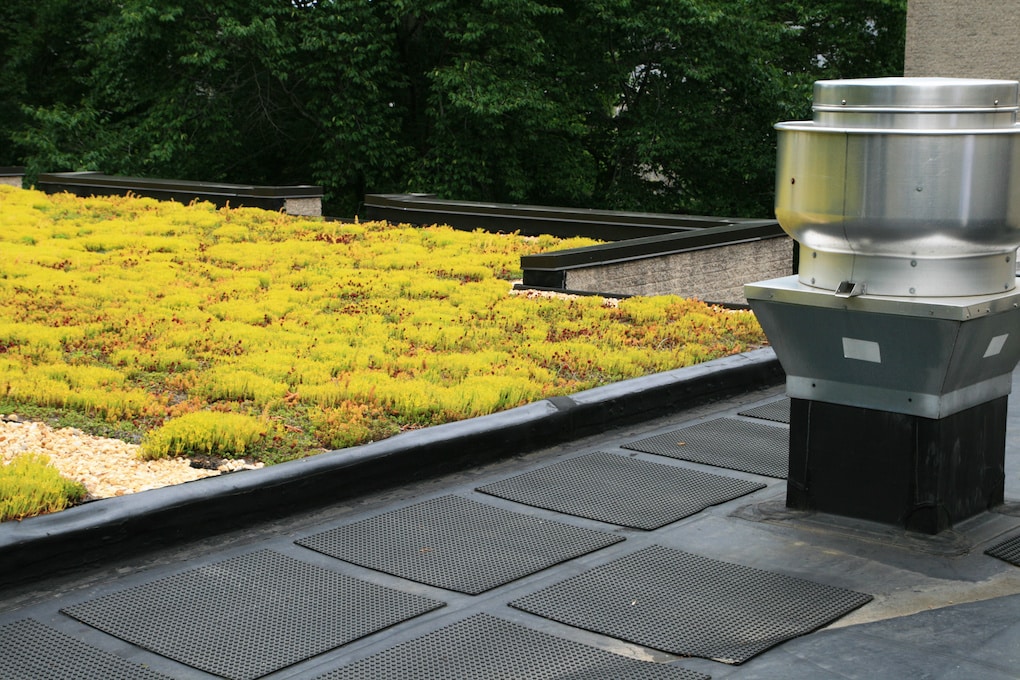
Built-Up Roofing
Built-up roofing is only intended for flat roofs, so they are more common for commercial buildings or large apartment complexes. This type of material is actually multiple materials layered on top of each other. Typically, built-up roofs consist of layers of asphalt, tar, or adhesive topped with aggregate material. This method is best for roof-top decks that experience heavy foot traffic.
- 🟢 Pros:
- Impressive durability
- Lasts around 20 to 30 years
- Affordable
- Low maintenance
- ❌ Cons:
- Can become sticky in summer and difficult to shovel snow off of in winter
- Slow to install
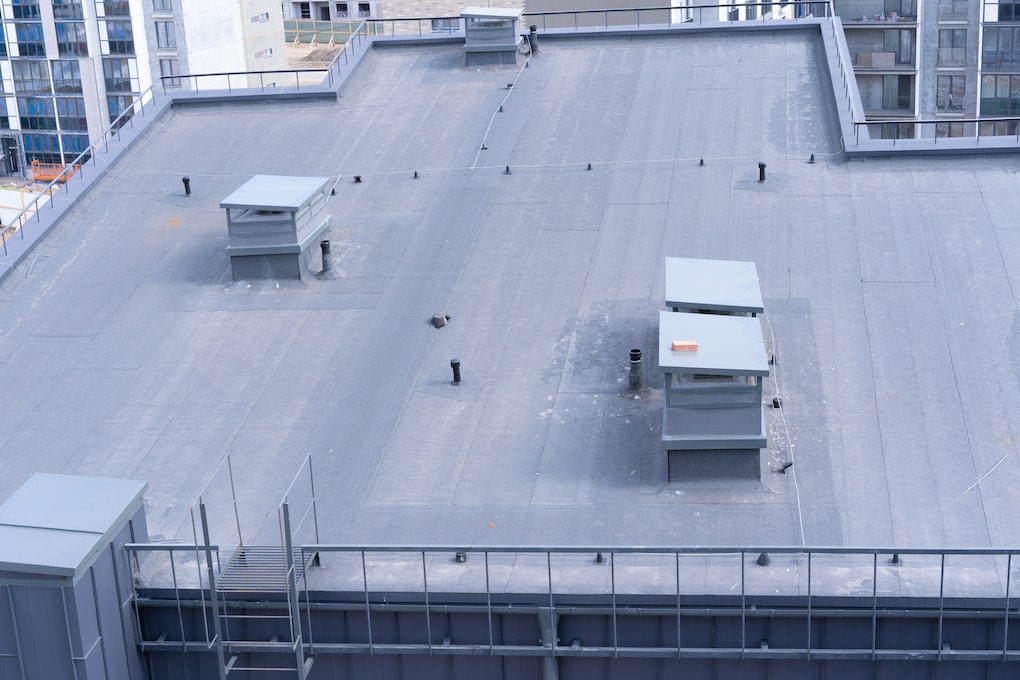
Cedar Shakes
Cedar shakes roofs are a type of wood shingle roof that has long been known for their aesthetic appeal. Cedar shakes are very stylish, making them popular for luxury homes. However, they are not ideal in wet climates or in areas that have persistent wildfire danger.
Wood shakes look similar to shingles, but they are different. Shakes get produced by splitting wood, and they are much thicker and have a rougher texture than shingles.
Climate makes all the difference with this material. Dry climates can see cedar shakes roofs lasting around 60 years, but the same roof may only last 20-3o years in a damp climate.
- 🟢 Pros:
- Attractive
- Long-lasting with proper maintenance
- Increases home value and curb appeal
- ❌ Cons:
- Expensive
- Only ideal for specific climates
- Require regular maintenance
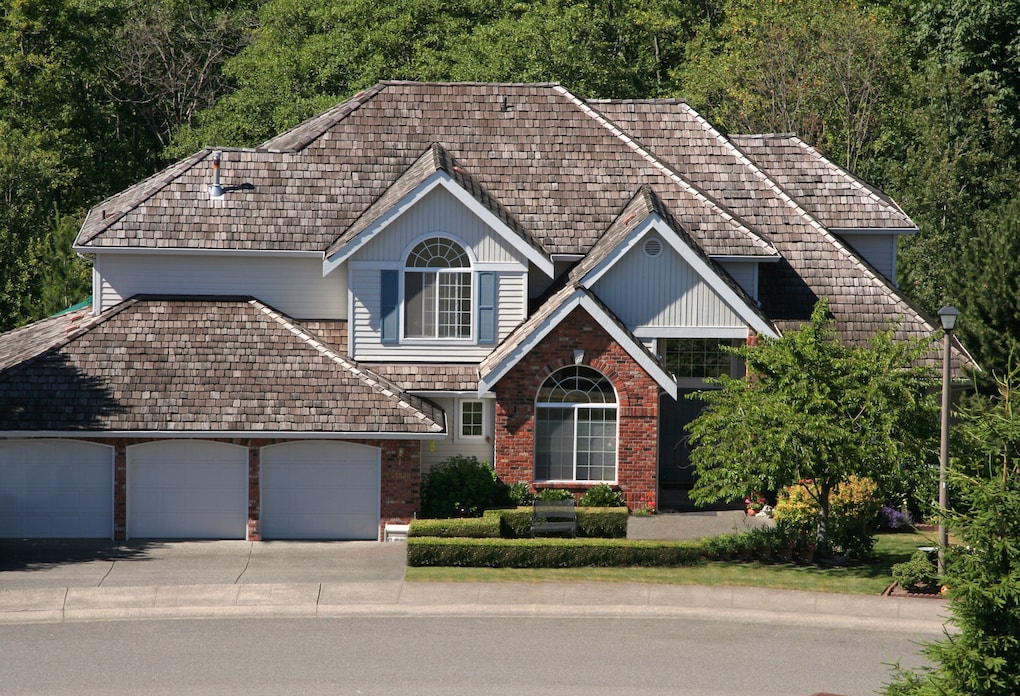
Concrete Tile
Similar to clay tiles, concrete tiles offer corresponding benefits for a fraction of the cost. Even the installation processes are very similar between clay and concrete tiles. Concrete tiles are molded from sand-mix concrete, but they can be colored to almost any color you want.
The shape of the tiles can also be adapted based on homeowner preferences. Since this material is so heavy, it works great in regions that experience high winds.
- 🟢 Pros:
- Far cheaper than clay tiles
- Typically last at least 50 years
- Extremely durable
- ❌ Cons:
- Home foundation may need added reinforcements to support the weight
- Color fades over time
- Challenging installation
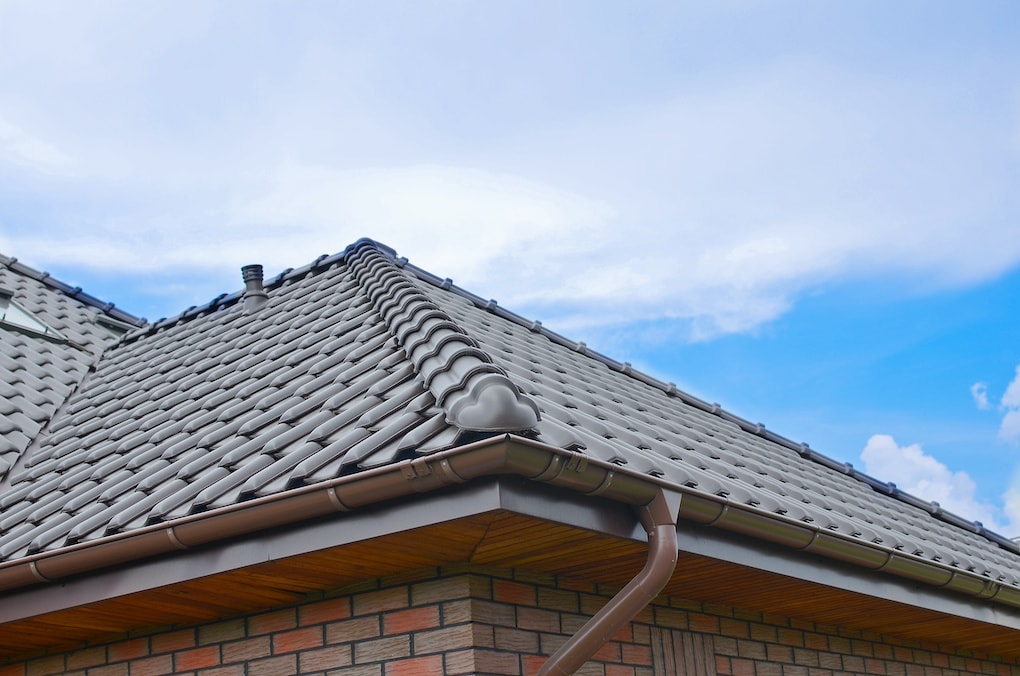
What Material Is Right for Your Roof?
As you can see, choosing a new roofing material requires a lot of research beyond just cost comparison. If you’re looking to save as much money upfront as possible, asphalt shingles are a tried-and-true choice for millions of homeowners.
However, if you value longevity, increased curb appeal, and environmental sustainability, you may consider pursuing a metal roof. (Or other options like solar tiles or slate!)
The roofing experts at Gouge Quality Roofing understand how challenging it can be to choose a roofing material with so many pros and cons to consider. Thankfully, you can trust our knowledge and expertise. Come to us with your budget and preferred wants and needs, and we will help you narrow down the perfect material for your new roof.
Reach out to us to get a free quote for your upcoming project or ask any questions you may have about the roof replacement process!
FAQ
Do metal roofs leak more than shingles?
No, metal roofs do not necessarily leak more than shingles. Proper installation and maintenance of both types of roofs are essential for preventing leaks. Metal roofs are known for their durability and longevity and can often last longer than shingles, but both types of roofs should be checked regularly for signs of wear and tear.
Does a metal roof make your house colder in winter?
No, a metal roof will not necessarily make your house colder in winter. In fact, metal roofs are highly reflective and can help to keep your house cooler in the summer. Metal roofs may also provide better insulation than other roof types and can help to reduce your energy costs during the colder months.
Does a metal roof devalue a house?
Metal roofs typically add value to a home due to their durability, energy efficiency, and low maintenance needs. Metal roofs also have a longer lifespan than other types of roofs, which can add to their resale value.
